江苏省昆山市锦溪中学八年级英语上册 Unit 2 School Life Reading 1教案 牛津版
- 格式:doc
- 大小:144.00 KB
- 文档页数:3
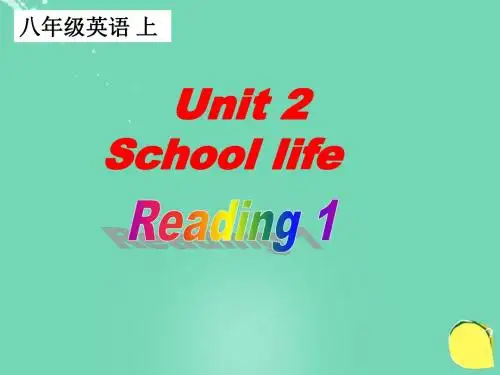

苏教牛津译林初中英语重点知识精选掌握英语语法知识,巩固词汇量和各种语态,学好英语基础一定要扎实,大家一起练习吧!牛津译林初中英语和你一起共同进步学业有成!Unit2 School life课题Comic strip and Welcome to the unit 总第课时备课时间上课时间课时Period 1 教具 A recorder and teaching picturesTeaching aims 1.To listen for details and extract specific information .2.To use knowledge presented in written text to infer general meaning and context .3.To grasp the language pointsTeaching focus To use knowledge presented in written text to infer general meaning and context .Difficult pointsTo use adjectives to describe feelings and opinions Teachingmethod情景交际法、任务型教学法.Teaching procedur es The second preparing lessonsStep 1 Showing a world mapGet the students to know the English-speaking countries around the world, by showing a world map to them. Meanwhile write the name of different English-speaking countries in the world. Let the students know the differences between British and American English.Step 2 Matchin g the two words that refer to the same thingsTell the students that people use different words to talk about the same things. Ask the students to open their books and match the two words that refer to the same things.Get the students to read these words syllable by syllable to help them remember it.Step3 Doing Part A on page 19G et the students to finish doing Part Aon page 19. Show the pictures and ask the students to speak out both the British and American words out loudly.StepP 4 Guessing what they are talking about?(1) Show the first picture of Comic Stripes to the student without the words. Ask the students to guess: “what are they talking about?”Play the tape for the students to listen and find out the answer to the questions.(2)Get the students to read and feel the humor here. (In fact, Eddie has no idea what school is like and why people need to got to school. However, he still thinks dogs are clever. ) If the students have noproblem in understanding the dialogue, get them to practice the dialogue in pairs and act out the dialogue in front of the class. Encourage the students to add something to make the dialogue funnier and more interesting.STEP 5 Talking about the sentencesTalking about the following sentences:(1) We are smarter than people.(2) There are fewer advertisements.(3)What is school like? It’s like watching TV.Step 6 Giving some reasons for your ideasEddie thinks school life is like watching TV. What do you think of our school life? Encourage the students to give some reasons for their ideasIt is very necessary for our teacher t o lead the students to tal k about the brighter side for the kid to develop a n active attitude towards school life as well as to study.STEP 7 HomeworkTry to find more information about the differences between British and American English.Teachingnotes相信自己,就能走向成功的第一步教师不光要传授知识,还要告诉学生学会生活。
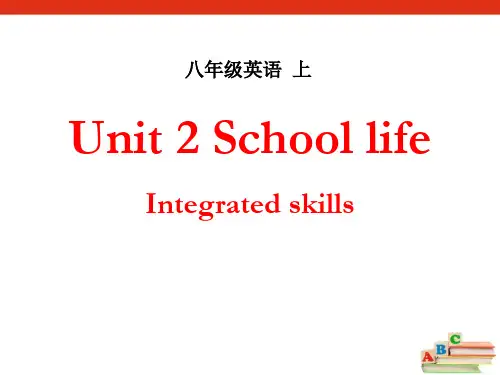
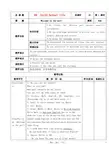
江苏省淮北中学英语学科教案
初二年级教案活页纸主备人:陈小军审核人:初二英语组全体老师
江苏省淮北中学英语学科教案
初二年级教案活页纸主备人:陈小军审核人:初二英语组全体老师
江苏省淮北中学英语学科教案
江苏省淮北中学英语学科教案
初二年级教案活页纸主备人:陈小军审核人:初二英语组全体老师
江苏省淮北中学英语学科教案
江苏省淮北中学英语学科教案
初二年级教案活页纸主备人:陈小军审核人:初二英语组全体老师
江苏省淮北中学英语学科教案
江苏省淮北中学英语学科教案
初二年级教案活页纸主备人:陈小军审核人:初二英语组全体老师
江苏省淮北中学英语学科教案
初二年级教案活页纸主备人:陈小军审核人:初二英语组全体老师。
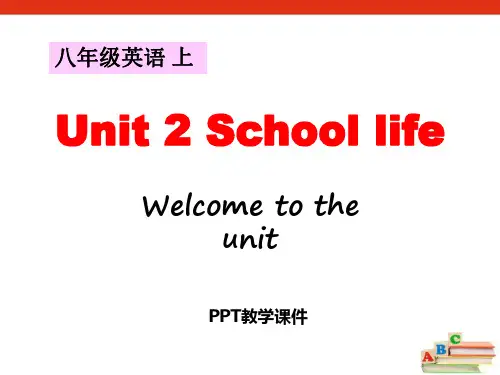
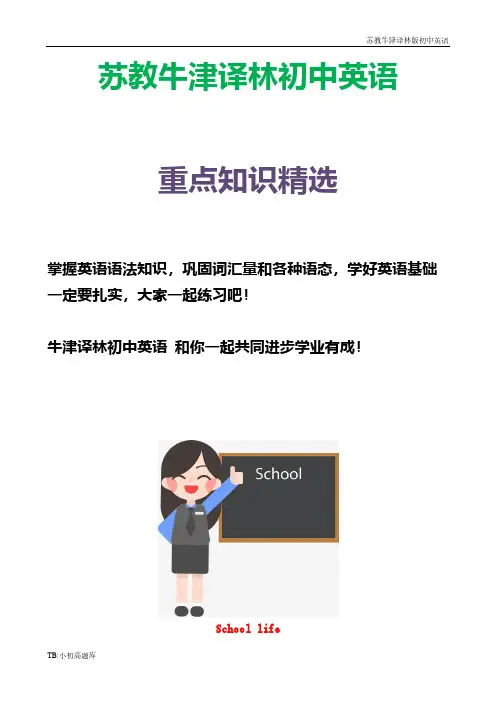
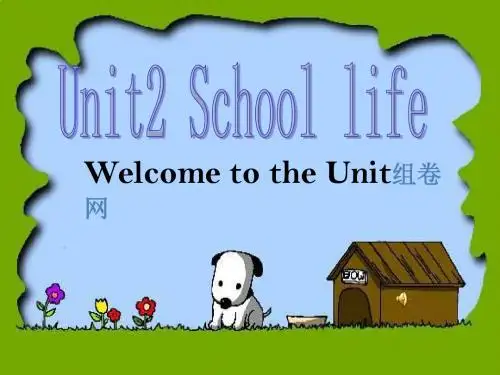

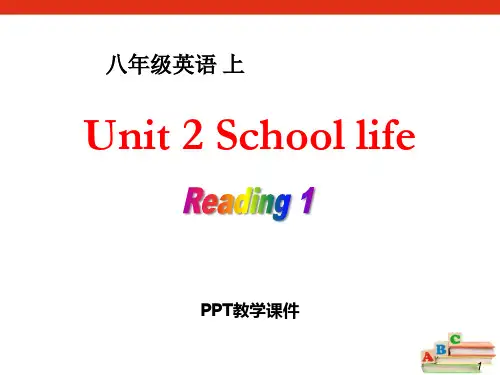


Unit 2Main TaskStep 1. QuestionnaireInvite the students to fill in the questionnaire in Part A, on Page 35. Then go through the questions one by one and focus on what they like or dislike about their school. Organize a discussion and encourage the students to speak as many proper reasons as possible.When the students are talking about what they like and d islike about their school. Ask them about their ideal school. Encourage t he students to write down their answers on Page 35.Step2 Designing a timetableInvite the students to design a timetable for their favorite subjects, sports and after-school act ivities. They may need this to write about their ideal school. Step3 Reading for structures1. Ask the students: Are you satisfied with your current school life? What is your idea l school life?Encourage the students to speak out their opinions.2. Students listen to the tape and answer:(1) When does Daniel’s school start?(2) How much homework does he have?3. Get the students to read the sample article by Daniel and figure out the ways or the structure that they can follow to write about their own ideal school. Use the following questions to help the students.(1) When does it finish ?(2) Wh y does he t hink it is his ideal school?(3) How long do they have lunch?(4) What can they do in the big dining hall?(5) What do they eat every day?(6) What subjects does Daniel like to have? Why?(7) How many students are there in each class?(8) What’s in his ideal school? There is a park, a shopping mall, a big library ,a tennis court and a swimming pool.(9) Do they have homework at weekends?(10) How often do they go on a trip to a museum or a theatre?Step 4 WritingTell the students that they can write their own article following the structure. Get the students to read the passage and pick up some useful sentence patte rns. Show some writings of their sStep 5 HomeworkGo on finishing writing板书设计Unit2 School life--- Main task1. How many subjects do you learn? What are they?Ss: Chinese, English, Math, History, PE, Geography, Science…2. Are you a member of the Reading Club? What other clubs do you want to join? Ss: I want to join Swimming/Drawing/Chess/Drama Club…3. What time does your school day start/finish? Ss: It starts/finishes at…T: Do you like it? Is it too early/late?4. What kinds of sports do you know?Ss: basketball, football, softball, volleyball…教学反思。
Unit 2 School Life单元教学计划一、本单元教学内容:1. Different words with the same meaning in British Eng lish and American English.2. School lives in different countries.3. Comparing the amount of things.4. comparative and superlative adverbs.5. Comparing different schools by listening and speaking6. The suffix –ly7. Writing about one’s ideal school二、本单元教学要求:1. To ask Ss to remember different words with the same meanings.2. To get Ss to read about something about school l ives in different countries.3. To help Ss to comp are the amount of things.4. To get Ss to use comparative and superlative adverbs correctly.5. To get Ss to form adverbs by adding the suffix –ly.6. To help Ss to write about their ideal school.三、本单元教学重点、难点:1. Comparing the amount of things.2. Comparative and superlative adverbs.3. The suffix –ly and the usage of adverbs.4. Writing about one’s school life.四、本单元教学进度安排:1. Comic strip & welcome to the unit 1 period; 6. Self-assessment 1 period2. Reading School lives 2 periods;3. Grammar 2 periods;4. Integrated skills 1 period;5. Task 1 period五、本单元教学注意点:1. The differences between comparing qualities and amo unt.2. Teach Ss how to form an adjective or an adver b by adding the suffix –ly to a noun. or to an adjective.3. The differences between comparative and superlative adjectives and comparative and superlative adverbs.。
苏教牛津译林初中英语重点知识精选掌握英语语法知识,巩固词汇量和各种语态,学好英语基础一定要扎实,大家一起练习吧!牛津译林初中英语和你一起共同进步学业有成!School life课题Grammar 1 总第课时备课时间上课时间课时Period 4 教具Pictures: a school, a computer room, a footballfieldTeaching aims 1. 运用more …than, fewer …than,和 less…than比较数量。
2.运用the most 比较两个以上的事物,表示数量最多,运用the fewest和the least比较两个以上的事物,表示数量最少。
Teaching focus 学习用more …than, fewer …than,和less…than来进行数量的比较,让学生注意可数名词和不可数名词。
Difficult points 学习用the most,和 the least\the fewest来进行表示数量,让学生注意可数名词和不可数名词。
TeachingmethodTask-based approach,Scene pedagogyTeaching procedures The second preparinglessonsStep 1 Revision1.Get the students to talk about the school lives in American and British schools. (It is a very important job for us to help the students feel familiar with the topic of the unit.)2. I will help the students focus on the subjects and the after-school activities by asking some questions:(1) What subjects does John/Nancy have at his school?(2) What did they do during their free time?Step 2 Looking aheadInform the students with what they are going to learn in this period. In Unit One (8A), we have learned how to compare two things or more. Most adjectives then are used after a linking verb. In Unit Two, we will learn to talk about the amount of two thing s or more. It is the comparative and superlative use of adjectives that are used before nouns.Show the pictures in Part A (P23) one by one. Ask the students to talk about the pictures.Step 3 Comparing in pairsGet the stud ents to compare John’s school, Nancy’s school and Daniel’s school in pairs.Step4 Talking about the school lifeGet th e students to talk about their school li fe by asking questions about subjects and the activ ities they do at scho ol. Encourage the students to put down the informationin the last column of the table. How many subjects do we have? What are they?What do you do at school, when you are free? How much free time do you enjoy?How long do you spend doing your homework?Get the students to compare their own information with Nancy’s school, John’s school and Daniels school. We have too much homework to do. So we have less free time than John and Nancy. We have more subjects than Na ncy. Step 5 Finishing Part A1Get the students to finish Part A1. Then get the students to talk about their lives at school. They may get the following sentences. Judy enjoys reading books. She reads more books than we do. She spends more money on books than we do. Tommy doesn’t like ball games . He spends less time playing football than we do.Step 6 HomeworkGo over what we learned today and finish off the exercises in the books.Teachingnotes相信自己,就能走向成功的第一步教师不光要传授知识,还要告诉学生学会生活。